Product Hierarchy: What is it and Why is it Important?
03/21/2025
Brand Strategy
Creating a distinct brand persona is key to building lasting emotional connections and shaping how your brand is perceived.

Product hierarchy serves as an essential strategic framework that aids companies in organizing their products and services. This systematic approach not only simplifies the search process for customers but also enhances the visibility of the company’s offerings.
.png)


Understanding the Role of Product Hierarchy in Enhancing Business Strategy



Understanding the Role of Product Hierarchy in Enhancing Business Strategy
This article will dissect the elements of product hierarchy, offering insights into its effective application for structuring your product and service portfolio.
With guidance from industry experts, you're set to refine your business approach, ensuring a significant uplift in sales performance.
Exploring the Concept of Product Hierarchy
At its core, product hierarchy is a structured system designed for the categorization of products or services, facilitating easier recognition and selection by customers. This methodology enables businesses to categorize their offerings into defined “lines,” which can then be segmented further into specific “mixes” and “types.”
Essentially, product hierarchy is the strategic method of breaking down the array of products or services into organized, manageable groups.
Breaking Down the Key Elements of Product Hierarchy
Product hierarchy is a crucial framework in strategic business planning, allowing companies to organize their offerings efficiently to cater to specific market segments or customer needs. This framework is composed of several key components: product lines, product mixes, and product types, each serving a unique role in the product categorization process.
Product Lines: A product line represents a collection of related products that cater to a specific customer segment or fulfill a particular market need. Examples of product lines include categories like automobiles, home appliances, or electronics, distinguished by factors such as price, intended use, or target demographic.
Product Mix: Within each product line, the product mix encompasses all the variations available. For instance, in the automobile industry, the product mix might include different models and types of vehicles, offering a variety of features and specifications to meet diverse consumer preferences.
Product Types: Delving deeper, product types refer to the specific characteristics that distinguish products within the same line. Using the automobile industry as an example again, product types could differentiate luxury sedans from economy sedans, highlighting the unique features and benefits of each.
Additional Components: Beyond these primary elements, product hierarchy can also extend to include individual items, such as specific models of a car, and variations of these items, like color options. These finer distinctions help businesses tailor their offerings more precisely to meet customer desires.
The Strategic Advantage of Product Hierarchy
Utilizing product hierarchy allows businesses to gain a deeper understanding of customer needs, facilitating the creation of more targeted marketing strategies. By organizing products into clear, distinct categories, companies can offer a wide range of choices without sacrificing the coherence of their product lineup.
This structured approach not only enhances customer satisfaction by making it easier for consumers to find what they need but also strengthens a company's market position by providing clarity and order to its offerings. Effectively leveraging product hierarchy can differentiate a business from its competitors and expand its customer base through more personalized and efficient service.
Here are a few tips:
• Organize products into categories and sub-categories. This helps customers navigate quickly and easily to find what they’re looking for.
• Include relevant keywords that your customers use when searching for products. This will ensure that your product pops up in search engine results.
• Continually update and refine your product hierarchy to keep it current and relevant. Ensure you have the right mix of product categories, sub-categories, Product Photos and keywords.
• Make sure the hierarchy is user-friendly, with clear labels and descriptions for each product.
By creating a well-thought-out product hierarchy, you'll make it easier for your customers to find what they're looking for - and give them a better shopping experience overall.
Every product in the market is a part of a broader category.
For example, Apple would be considered a part of Consumer Electronics; Nike would be categorized under Sports and Fitness, along with other brands such as Adidas.
Understanding where your brand or product lies in the larger scheme of things is essential.
This can help you create better products, services, and marketing initiatives that cater to your target market.
When flaunting your products, displaying them organized is always important.
This works for all situations, whether you are doing it on your eCommerce website, your product and category pages, or your blog.
And it always helps to categorize them based on a hierarchical structure.
It doesn't matter if you are selling just one product or the whole range of products – a hierarchical structure will always help get new users interested in what you offer.
In simple terms, Product Hierarchy means implementing a hierarchy-based framework when organizing online products.
These kinds of structures are always helpful in understanding the relationship between items and categories simultaneously – resulting in a fulfilling user experience.
What is Product Hierarchy?












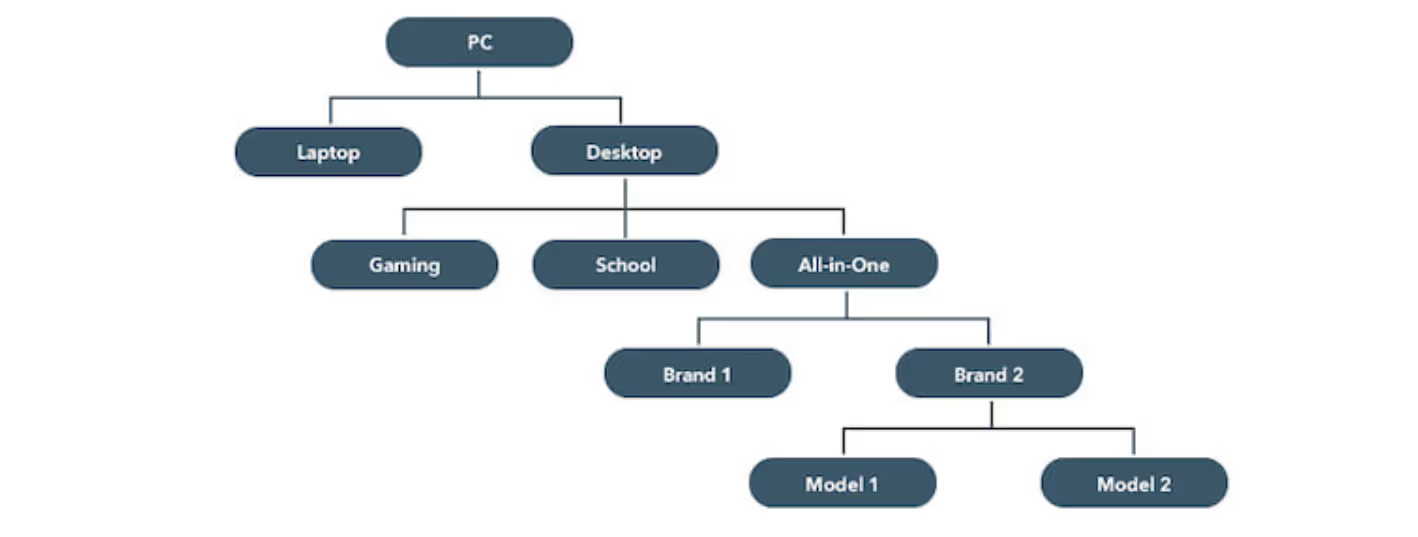
Product hierarchy, also called a product tree, is a product family that shares common characteristics and is sold together.
Parent-child relationships between products may define product hierarchy.
Products may be grouped into categories (e.g., "car" and "truck"), subcategories (e.g., "sedan" and "SUV"), or both categories and subcategories (e.g., "SUV" or "sedan").
Businesses often use product hierarchies to organize the products on websites, catalogs, and price lists. Organizing your products allows customers to find their desired outcomes more efficiently.
We can look at the product hierarchy at six levels:

Product Need
The first step in creating a product hierarchy is identifying the need you want to address.
For example, you may want to address the need for transportation.
Product Family
The product family is the second level of the hierarchy. It is a set of products that share common attributes and are often related by function or use.
For example, all cars are part of the same product family because they all share the same purpose: transportation.
However, customers may consider different brands and types of toothpaste products within that family because they have distinct features and characteristics.
Product Class
The product line is the third level of the hierarchy.
It is a group of similar items that perform the same function that companies design for different end uses or applications.
For example, companies could design several different types of refrigerators for various uses.
Still, they would all be part of the same product class because they share specific characteristics (size, insulation material, etc.).
Product Line
The product line is the fourth level of the hierarchy.
It is a group of products with similar functions that differ in appearance or performance capabilities (i.e., features).
For example, many different types of cameras are available today (DSLR cameras, point-and-shoot cameras, action cameras).
Still, they all fall under the same umbrella category because they have similar functions (taking photos).
Product Type
The product type is the fifth level of the hierarchy, representing the general category of products you want to display on your website.
Businesses can use product types for various kinds of products, such as clothing, electronics, or books.
For example, if you have a site that sells shoes and clothing, you could have two different product types: one for shoes and another for clothing.
Product Item
The product item is at the sixth level in the hierarchy.
It is where you specify what each product looks like on your site.
For example, if you have a pair of Nike shoes available in different sizes and colors on your site, each pair would have its product item.
Want to learn more about brand platforms, Brand Strategy and Brand Identity? Keep reading!
If you need help with your companies brand strategy and identity, contact us for a free custom quote.
How is Product Hierarchy important?

Whether you are a digital marketer or an online entrepreneur trying to find the right product on a marketplace, knowing how to classify your business can make all the difference in the growth of your business.
When you know how to classify your products, your customers can key in on what they are looking for.
And when they can key in on what they are looking for with little effort, this helps them make their purchase decisions.
What are the five product levels?
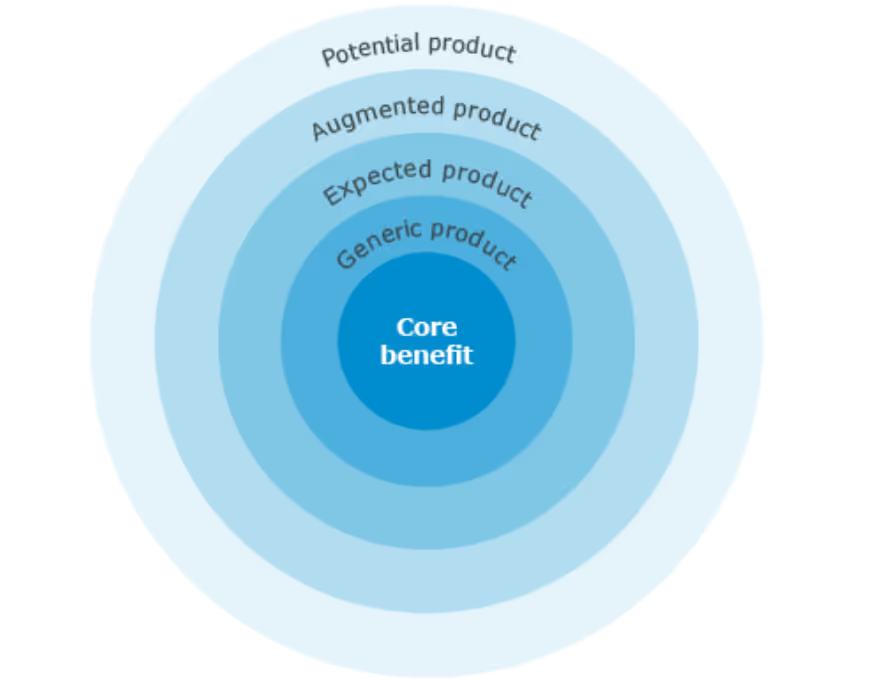
Product levels are product groupings that help you map out and communicate who your product is best for, what problem it solves, and why it's the best product for the job.
A business can define a product into five levels where the customer value increases on each level.
Core Benefit or Core Product
The core product is the most basic level of any product offering.
It is what your customers would expect from any product you offer them.
In other words, if they wanted a pen, they would expect it to write and be comfortable in their hands when registering with it.
If they wanted coffee, they would expect it to taste good and give them energy if they are tired or sick.
The core benefit is the main reason why you exist as a business.
The core benefit is what makes your business unique and different from other businesses.
Generic Product or Basic Product
The basic product is buyers' first level when they purchase an item or service.
It includes all the features and benefits customers expect in their purchases.
For example, when someone buys a car, they expect it to run well and be reliable.
They also hope to have air conditioning and power windows.
These are all part of the basic product level of a car purchase.
Expected Product
The expected product is what a customer wishes to receive when they buy your product; it is not necessarily what they get.
Think of this as a bonus for their purchase - something extra keeps them returning for more.
For example, if you sell an ebook on losing weight, you could offer additional bonuses like access to weekly webinars or fitness videos.
Augmented Product
The augmented product is what you can do with a product after purchasing it from a company.
For example, Apple includes free apps in every iPhone purchase, such as iMovie and GarageBand.
The company also gives users access to its iCloud storage service, which customers can use for storing documents, photos, and other files.
This service is usually referred to as "wrap-around" services because they "wrap around" the actual product and make it more useful for its owner.
Potential Product
A potential product is the idea of a product and how it might look, feel and work.
Possible products don't have many details; they're just a concept.
An excellent example of this would be an idea for an app like Instagram.
It's not much more than drawing a rough sketch on a napkin, but it shows how the idea will work and how people might use it.
What are the four classifications of products?

Product classification is arranging the various available products or services in specific groups.
These groups or classes include different criteria for accommodating various similar products according to their nature and use.
Let’s get into the four classifications of products.
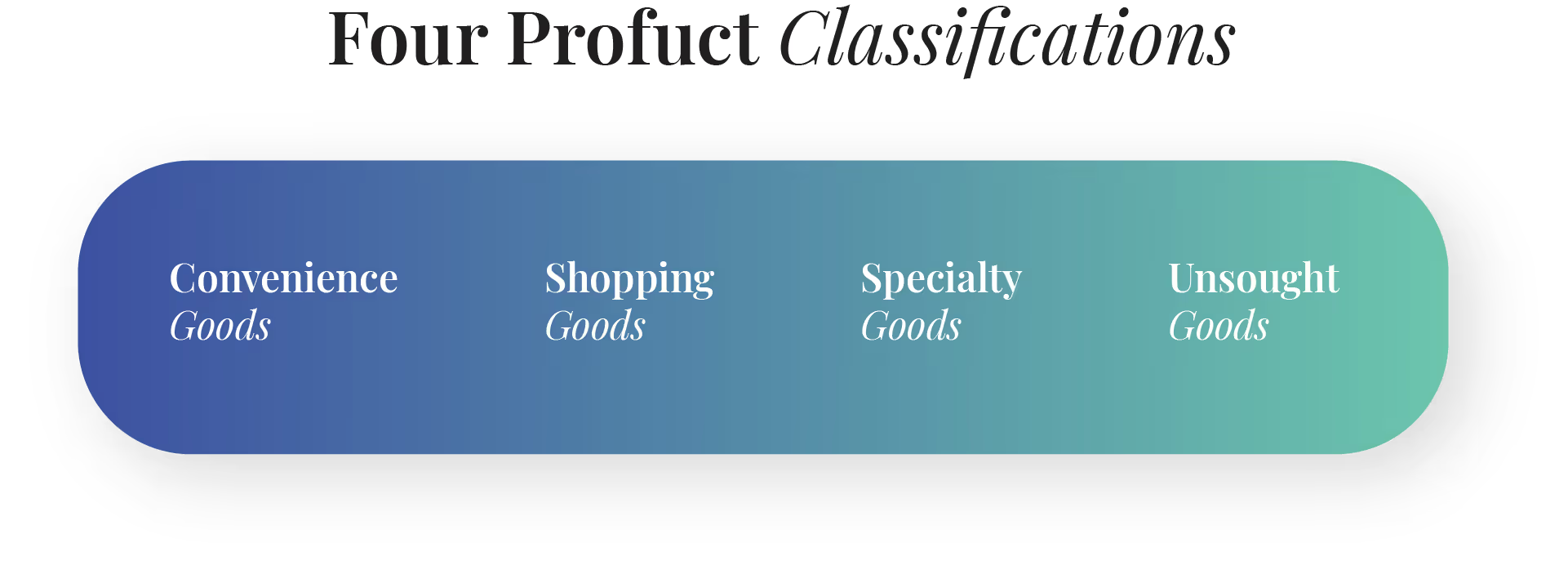
Convenience Goods
Convenience goods (or convenience products) are products that customers purchase to satisfy their needs.
They are purchased frequently in small quantities, such as toothpaste and toilet paper.
Typically, convenience goods are sold pre-packaged with little or no customer effort required before consumption.
Convenience goods can reduce our time, effort, and physical exertion.
These goods have comparatively low prices, high sales volume, and high market share in some geographic regions.
Shopping Goods
Shopping goods, unlike convenience goods, are products that are not frequently sought, cost more money, last a long time, and take more time to research.
An example is high-end goods such as cars or houses.
Specialty Goods
The Specialty Goods industry includes companies that produce consumer products aimed at a specific type of consumer: teens, horse lovers, winter sports enthusiasts, and scuba divers, for example.
These products typically do not appeal to mass-market consumers and thus have limited distribution from big-box retailers and other trend-following outlets.
Products in this industry include youth fashion and apparel, souvenir items, jewelry, collectibles, toys and games, party supplies, and greeting cards.
Unsought Goods
Unsought goods are not actively sought by the buyer but nonetheless were of interest at the moment of purchase, or in other words, items that the buyers did not need and did not know they wanted.
This category would include, among others: Batteries, Spices, Newspapers, Life Insurance, and Fire Extinguishers.
Ready to make a hierarchy for your products?
Well, there you have it! You now have a better understanding of product hierarchy within product design and development.
If you haven’t already, it is also recommended to learn more about Brand Hierarchy which has an essential relation with Product Hierarchy.
The next step should be to start making one for your product.
If you need help with product hierarchy or have any questions, you can contact us at The Branded Agency.

Sloane Avery
As entrepreneurs, they’ve built and scaled their own ventures from zero to millions. They’ve been in the trenches, navigating the chaos of high-growth phases, making the hard calls, and learning firsthand what actually moves the needle. That’s what makes us different—we don’t just “consult,” we know what it takes because we’ve done it ourselves.
Want to learn more about brand platform?
If you need help with your companies brand strategy and identity, contact us for a free custom quote.
We do great work. And get great results.
+2.3xIncrease in revenue YoY
+126%Increase in repurchase rate YoY



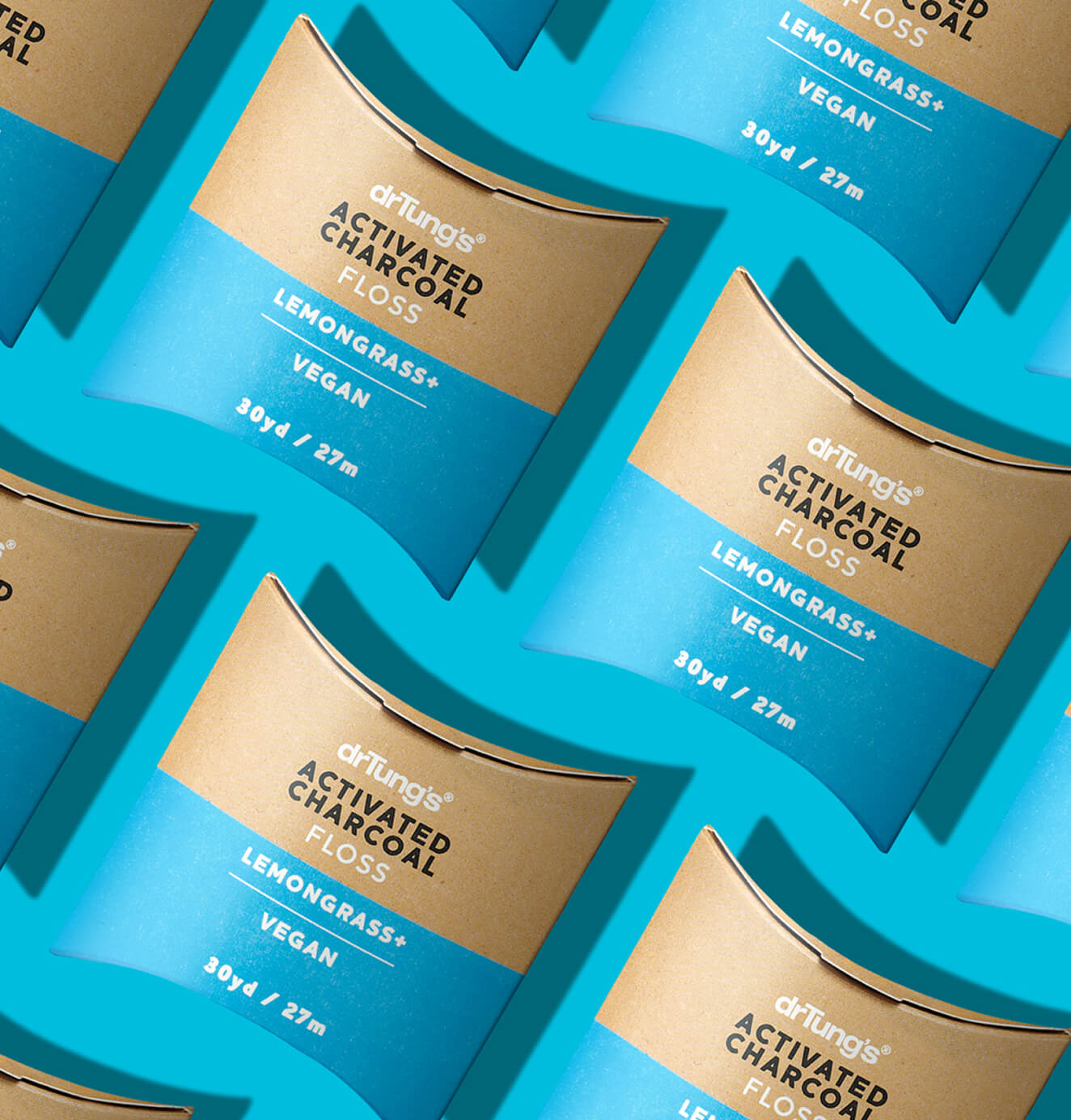




+93%Revenue growth in first 90 days
+144% Increase in attributed revenue


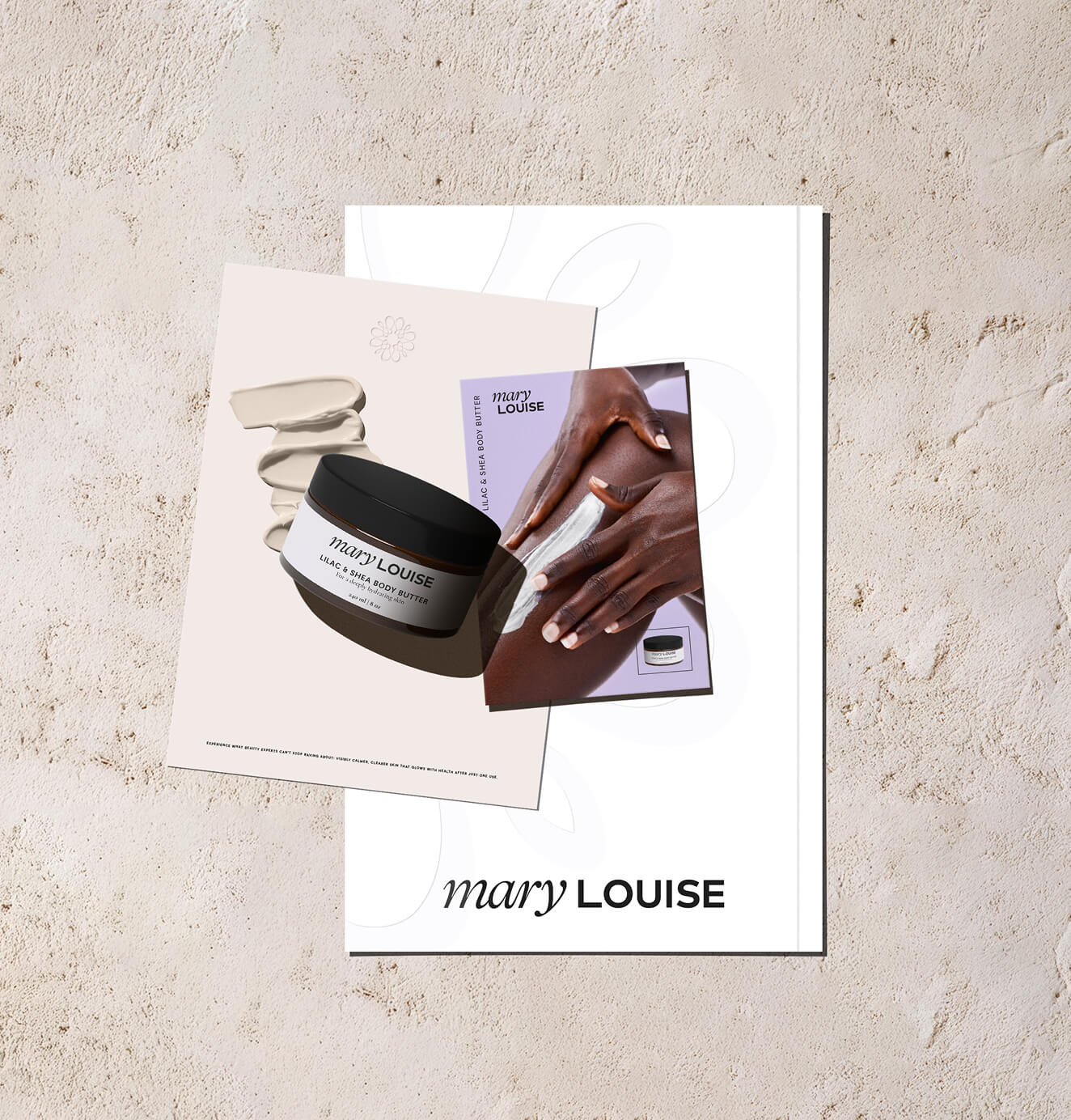





+91%Increase in conversion rate
+46%Increase in AOV


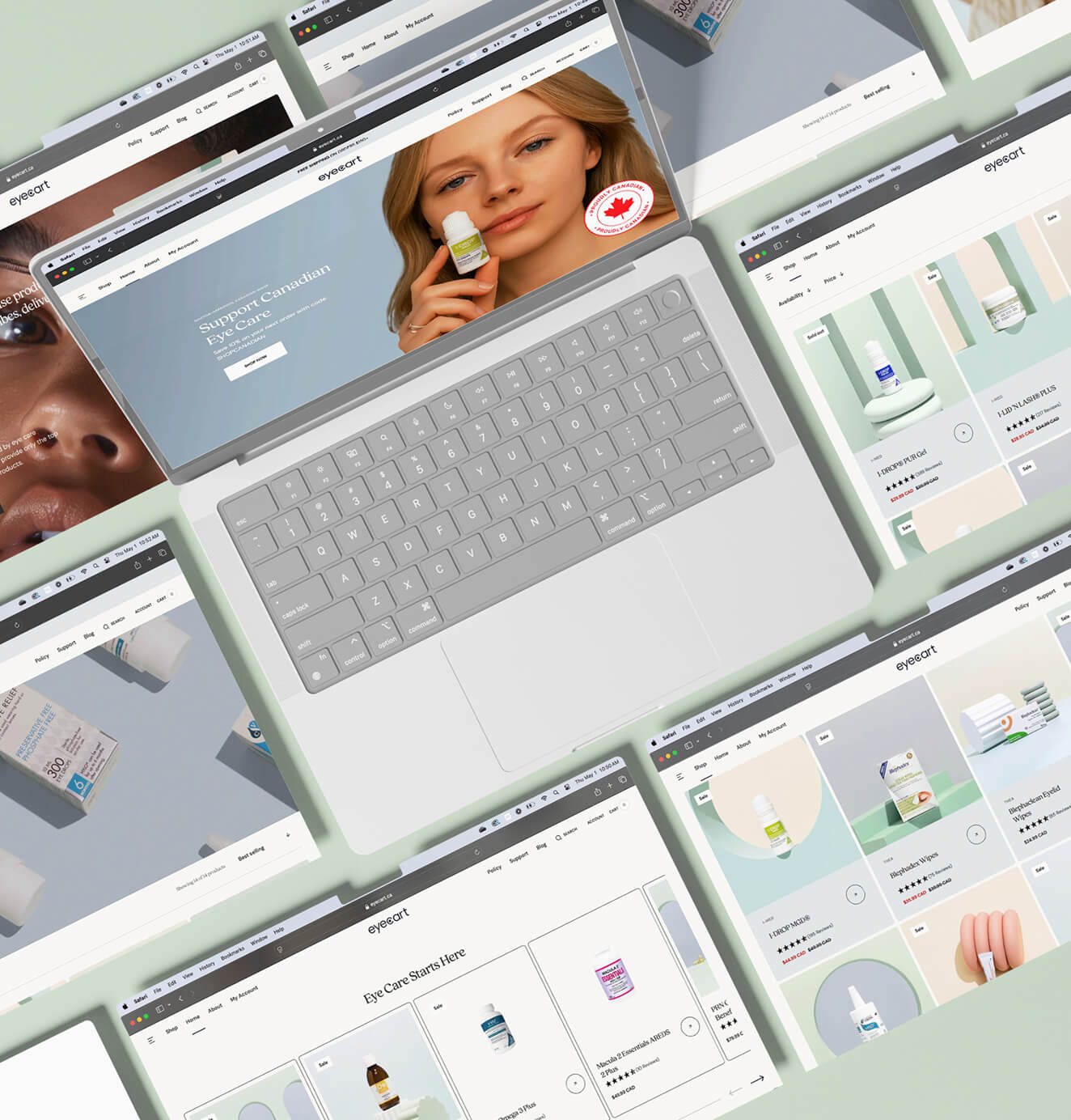





+200%Increase in conversion rate
+688%Increase in attributed revenue












